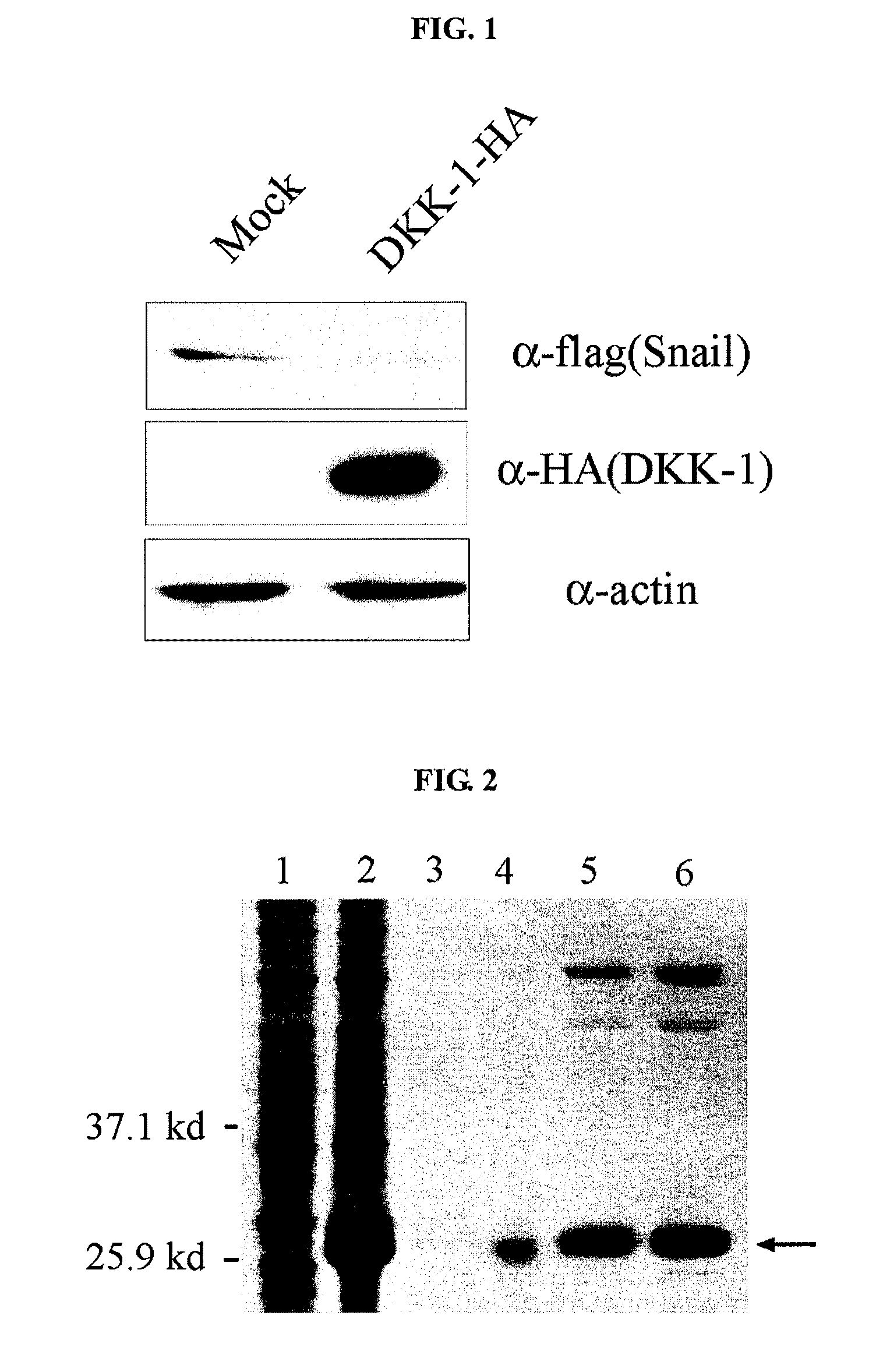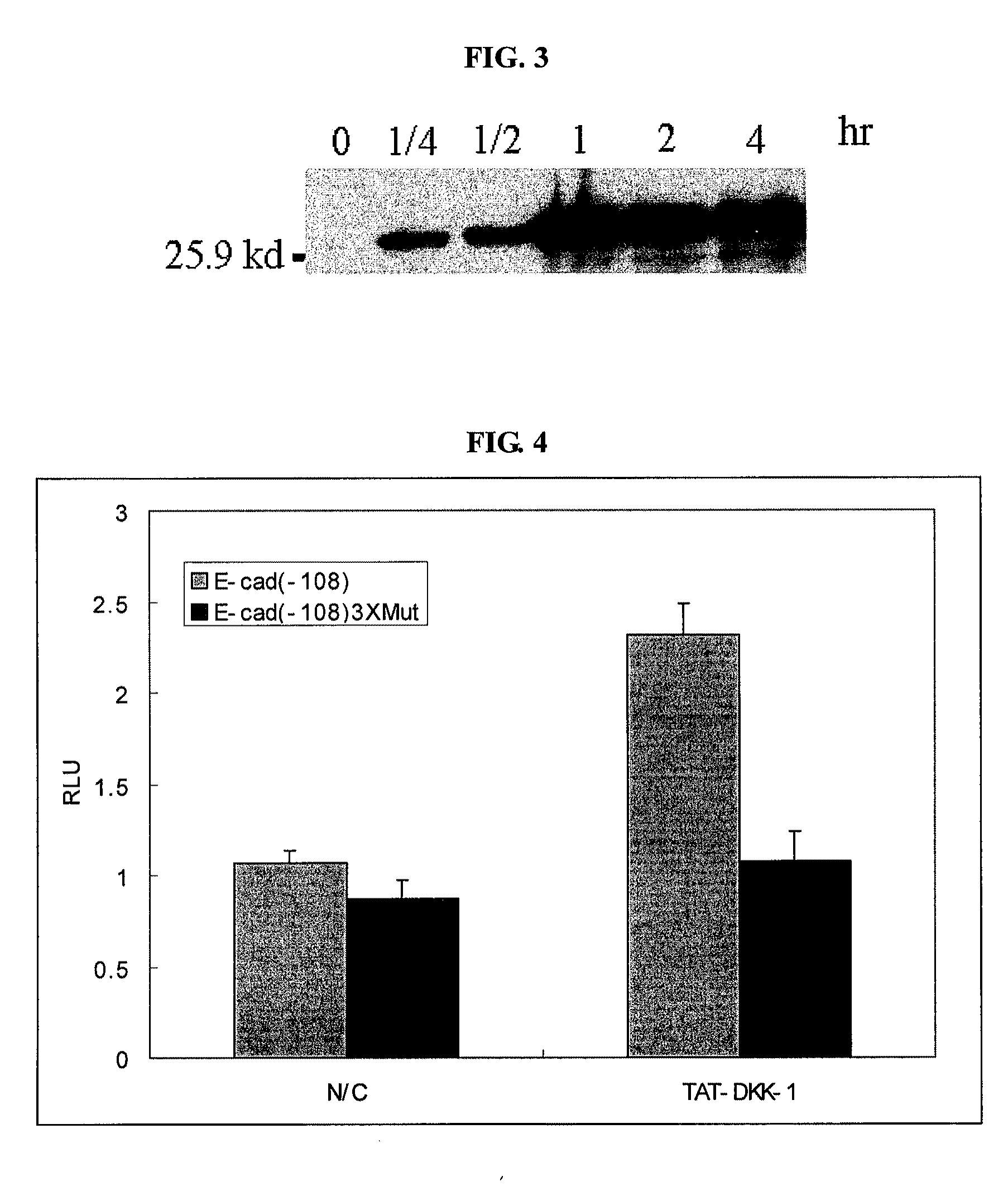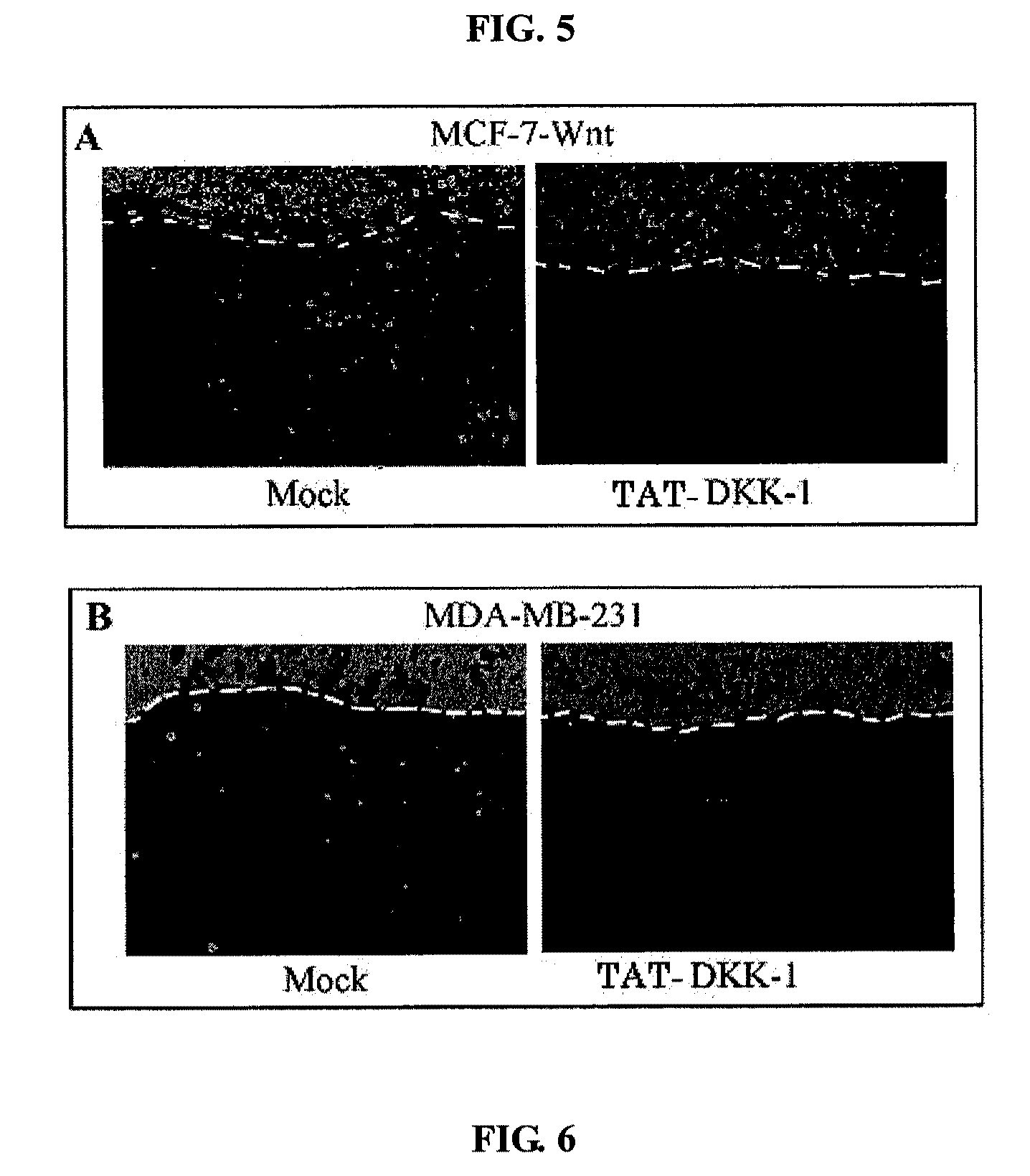Non-activated wnt inhibition polypeptides and method for preparing the same
a technology of wnt and inhibition polypeptides, which is applied in the field of non-activated wnt inhibition polypeptides, can solve the problems of less effective stability and duration of tat-fusion proteins, low transmission rate of tat (rkkrrqrrr), and inability to know the cellular mechanism of cancer cell metastasis, so as to avoid a decrease in biological activity and increase cell permeability.
- Summary
- Abstract
- Description
- Claims
- Application Information
AI Technical Summary
Benefits of technology
Problems solved by technology
Method used
Image
Examples
example 1
Inhibition of Snail Expression By Use of DKK-1 Expression Vector
[0070]Wnt signaling induces the activation of Snail through a mechanism of inhibiting GSK3-β. Meanwhile, Snail is known to inhibit the transcription of E-cadherin and regulate the migration / metastasis of epithelium-derived cells (Nature Cell Biol., 2:84, 2000; Nature Cell Biol., 2:76, 2000; Nature Rev. Mol. Cell Biol., 3:155, 2002). Thus, Wnt signaling inhibits the expression of E-cadherin via Snail and also induces the invasive growth and metastasis of cancer cells. Therefore, if the expression of Snail, which is regulated by Wnt, can be inhibited, the invasive growth and metastasis of cancer cells can be inhibited.
[0071]In this Example, a gene encoding hDKK-1 was amplified by RT-PCR using 293 cell (American Type Culture Collection, ATCC CRL-1573) mRNA as a template with primers of SEQ ID NOs: 1 and 2.
5′-gct tgc aaa gtg acg gtc att-3′(SEQ ID NO: 1)5′-cta tcc aaa tgc agt gaa ctc-3′(SEQ ID NO: 2)
[0072]The amplified gene ...
example 2
Inhibition of Wnt Signaling and Cancer Cell Invasion By TAT-DKK-1
[0074]The hDKK-1 gene cloned in Example 1 was further cloned into bacterial expression vector pRSET (Invtrogen). TAT (YGRKKRRQRRR: SEQ ID NO: 3) was inserted in front of the 5′-region of the hDKK-1 gene, and then X-press (Invitrogen, Inc.) tag, a base sequence encoding 6 histidines for isolation and purification, and start base sequence ATG, were inserted in front thereof, thus constructing a recombinant expression vector for the expression of hDKK-1.
[0075]The constructed recombinant vector was introduced into E. coli BL21 (Invitrogen Inc.) using a heat shock method, and the bacterial cells were cultured at 37□ for 2-3 hours. Then, IPTG (isopropylthio-galactoside) was added thereto to a concentration of 1 mM, and the bacterial cells were additionally cultured for 2-18 hours to induce the expression of TAT-DKK-1.
[0076]Said E. coli were centrifuged from the culture broth, and cell pellets were collected from the culture...
example 3
Inhibition of Wnt Signaling and Cancer Cell Invasion by TAT-DKK-1
[0082]In order to examine whether the non-activated TAT-DKK-1 according to the present invention inhibits the invasive growth of cancer cells and, furthermore, can be used as a metastasis inhibitor, the expression of Wnt-1 in MCF-7 cells was induced (J. Biol. Chem., 280:11740, 2005). MCF-7 having no invasive ability shows invasive growth through Wnt expression, during which the invasion of cancer cells completely depends on Snail expression and E-cadherin promoter activity (J. Biol. Chem., 280:11740, 2005). Thus, if TAT-DKK-1 inhibits Wnt signaling, invasive growth induced by Wnt signaling can be inhibited. To demonstrate this, in this Example, the Wnt-expressing MCF-7 cell line was treated with 5 nM TAT-DKK-1 and cultured in the chorioalantoic membrane of chicken eggs for 48 hours, and the invasion of the cancer cells was observed with a fluorescent microscope (FIG. 5).
[0083]As a result, as shown in FIG. 5, TAT-DKK-1...
PUM
| Property | Measurement | Unit |
|---|---|---|
| permeate | aaaaa | aaaaa |
| structures | aaaaa | aaaaa |
| stability | aaaaa | aaaaa |
Abstract
Description
Claims
Application Information
 Login to View More
Login to View More - R&D
- Intellectual Property
- Life Sciences
- Materials
- Tech Scout
- Unparalleled Data Quality
- Higher Quality Content
- 60% Fewer Hallucinations
Browse by: Latest US Patents, China's latest patents, Technical Efficacy Thesaurus, Application Domain, Technology Topic, Popular Technical Reports.
© 2025 PatSnap. All rights reserved.Legal|Privacy policy|Modern Slavery Act Transparency Statement|Sitemap|About US| Contact US: help@patsnap.com



